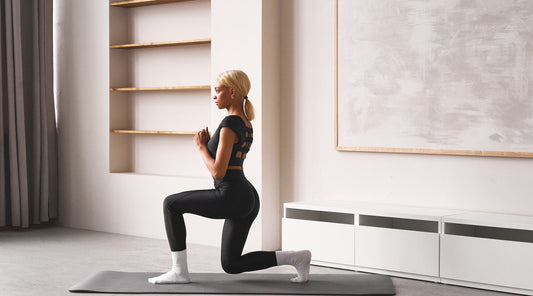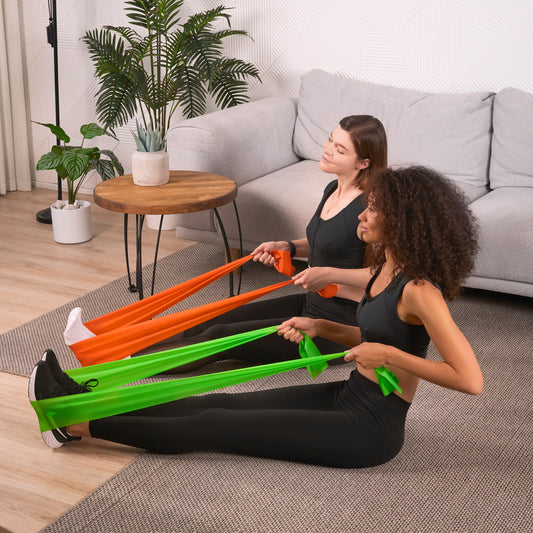In addition to improving balance and lowering the chance of injury, proper posture can help ease pressure on muscles and joints. Maintaining the correct alignment of your body can help you avoid chronic pain and slouching, which can cause your muscles and joints to deteriorate excessively.
Maintaining proper posture lowers the risk of overuse injuries and helps manage muscle tension by distributing the pressure equally across the various muscle groups.
When it comes to preserving general health and well-being, it is especially important to prevent chronic pain through posture. Poor posture puts excessive strain on the spine, muscles, and joints when sitting, standing, or sleeping.
Proper posture encourages ideal body alignment and lowers the chance of strain and injury. Understanding and enhancing posture can help people avoid or treat ailments, including headaches, joint pain, and chronic back pain, enhancing their quality of life and having long-term health advantages.
Understanding the Link Between Posture and Chronic Pain
What specific role does bad posture have in chronic pain? First, it alters the way your weight is distributed, increasing pressure in some places and decreasing pressure in others. This may harm your blood vessels and nervous system, leading to unpleasant feelings.
Over time, it may also result in muscle strain and degradation, which eventually creates more noticeable aches and pains. As your muscles weaken, especially your back muscles, you can no longer adequately support your neck, shoulders, and spine.

How to Prevent Chronic Pain Through Better Posture
Recognizing the Early Signs of Poor Posture
To find out whether your posture is incorrect, let's look at a few indicators:
Forward head posture
FHP causes discomfort, stiffness, and headaches by putting additional strain on the shoulders and neck. You must stretch tense spots, strengthen your neck muscles, and straighten your posture to fix it.
Back and neck pain
Poor posture can put more strain on the bones, muscles, and joints of the spine, resulting in neck and back pain. In addition to causing pain in the neck and back muscles, slouching or hunching over oneself can alter the spine's natural posture, leading to soreness, stiffness, and discomfort.
Rounded shoulders
The rounded shoulders indicate poor posture, which displays the shoulders bent forward and the upper back curved. This position puts excessive tension on the muscles of the neck, shoulders, and upper back, which may cause pain and discomfort.
Awareness of signs of poor posture and chronic pain is a big step toward improving your health. However, one more thing serves as a helpful friend: the posture corrector.
Simple Daily Habits to Improve Posture
Practice mindful movement and postural alignment strategies to maintain energy levels, emphasize posture, and develop body awareness in your regular tasks.
Adopting a posture-conscious mindset can improve your general well-being. By being mindful of your posture, movement, and sitting, you may avoid strained muscles, increase circulation, and sharpen your mind.
Simple habits like sitting with your back straight, using your core muscles when you're doing something, and doing frequent stretches can greatly impact your comfort and energy levels all day long. These minor changes result in a more balanced and invigorated body, which also helps you feel stronger and more balanced in your everyday activities.
Ergonomic Adjustments for Chronic Pain Prevention
Making ergonomic changes is crucial to avoiding chronic discomfort, particularly for people who work at desks or sit for extended periods.
- The first step in implementing an ergonomic setup is to ensure that your computer monitor is at eye level to avoid neck pain.
- Maintaining a neutral spine position can be facilitated using an adjustable chair with enough lumbar support.
Remember to take a movement break every hour by getting up, stretching, and moving around to counteract the detrimental effects of extended sitting.
By using your legs rather than your back to lift objects, you can practice attentive body mechanics and avoid long-term muscle tension and injury.
Chronic Pain Posture Solutions for Everyday Life
Exercises to Strengthen Posture Muscles
The following easy workouts may help you build stronger posture muscles:
- Chin tucks. Hold your chin gently against your chest for a few seconds. Repeat ten to fifteen times to build stronger neck muscles.
- Shoulder blade squeezes. Tighten your shoulder blades together, then let go after a short moment. To engage the upper back muscles, repeat 10–15 times.
- Wall angels. Raise your arms to a 90-degree angle while leaning against a wall, then slowly move them upward and downward. To target the upper back, repeat 10–12 times.
- Planks. Hold a forearm plank for 20 to 30 seconds to strengthen your core and maintain proper posture.
- Bridges. While on your back, raise your hips, hold them for a few seconds, and lower them. Ten to fifteen repetitions can help you develop your lower back and glutes.
Posture-Correcting Devices and Accessories
Posture-correcting equipment and accessories can greatly aid pain prevention and alignment improvement. Unobtrusive and efficient options include posture bras like the Etalon. These carefully made bras gently support the shoulders and back, assisting in maintaining good posture all day.
Additionally, lumbar-supporting ergonomic seats can help improve sitting posture, and seat cushions can relieve spinal strain. These gadgets are useful reminders to keep proper posture when standing or sitting for extended periods.
Mindfulness Practices to Maintain Proper Posture
Mindfulness techniques help people maintain good posture by increasing bodily awareness. By routinely checking in with your posture throughout the day, you can ensure that your head is balanced, your spine is in alignment, and your shoulders are relaxed.
Yoga, stretching, and deep breathing are some methods that can increase flexibility and strengthen proper posture.
Furthermore, practicing mindfulness eases muscle tension and stress, which facilitates maintaining good alignment and preventing discomfort. By incorporating mindfulness into your regular activities, you may improve your posture and general well-being over time.
Conclusion
Maintaining good posture is crucial for preventing chronic pain because it guarantees that the muscles and spine are aligned correctly. By identifying early warning symptoms, implementing ergonomic changes, and practicing good posture, people can lower their chance of developing chronic pain and discomfort. Adopting good posture practices is essential for promoting a pain-free lifestyle and enhancing general health.
FAQs
What are the most common causes of chronic pain related to posture?
How does slouching contribute to long-term back or neck pain?
Can workplace ergonomics reduce the risk of posture-related chronic pain?
What are the best posture exercises for relieving chronic pain?
Are posture-correcting devices effective for chronic pain prevention?
Trending
Try Etalon posture improvement products










